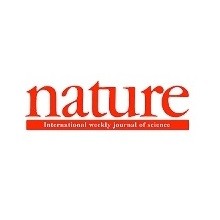
کیت ابزار کریسپر برای ویرایش ژنوم و فراتر از آن
کریسپر به یک ابزار ضروری در تحقیقات بیولوژیک تبدیل شده است. کریسپر سابقا به عنوان سیستم ایمنی باکتریایی علیه ویروس های مهاجم شناخته می شد ، امروزه ظرفیت قابل برنامه ریزی آنزیم Cas9 ، انقلابی در زمینه های مختلف تحقیق پزشکی، بیوتکنولوژی و کشاورزی به وجود آورده است. CRISPR-Cas9 دیگر فقط یک ابزار ویرایش ژن نیست؛ زمینه های کاربردی Cas9 غیر فعال معیوب از نظر کاتالیتیکی ، از جمله تنظیم ژن، ویرایش اپی ژنتیک، مهندسی کروماتین و تصویربرداری، در حال حاضر از قابلیت ویرایش ژن WT Cas9 فراتر رفته است. در اینجا، ما یک تاریخچه مختصر از ابزارهای ویرایش ژن را ارائه می دهیم و طیف گسترده ای از ابزارهای هدفمند سازی ژن مبتنی بر CRISPR را توصیف می کنیم. ما با مسیرهای آینده و تأثیر گسترده تر فناوری CRISPR این بحث را به پایان خواهیم رساند.
اختراعات بزرگ و اکتشافات اغلب به عنوان یک سری از وقایع خوش شانسی طبقه بندی می شوند. با این حال، نگاه دقیق تر به تاریخ آنها نشان می دهد که اکتشافات واقعا غیر مترقبه، چنانچه این اکتشافات در زیست شناسی مولکولی وجود داشته باشند، بسیار نادر هستند. شاید برای سایر رشته های علمی نیز صادق باشد. پیشگامان پیشرفت های علمی دارای ویژگی های متعددی هستند. آنها اغلب در طول دهه ها تلاش های مشترک بسیاری از ذهن های بزرگ ساخته شده اند. حتی کشفیاتی که به اصطلاح غیر مترقبه نامیده می شوند ، هنگامی اتفاق می افتد که یک پژوهشگر کنجکاو و با ذهن باز یک سری آزمایش های دقیق را به قصد پیگیری مشاهدات جالب طراحی کند. در طی این فرآیند، محققان با ذهن خلاق و دانش زمینه ای عمیق می توانند فرصت را برای همگام ساختن زمینه های تحقیقاتی به ظاهر جداگانه غنیمت بشمارند و تأثیر علمی بزرگتری بگذارند. فن آوری های ویرایش ژنوم و ابزار CRISPR در طول سال های تحقیق علمی پایه ای و پیشرفت از سوی تعداد زیادی از محققان، وارد مرحله هیجان انگیز فعلی شده اند. این بررسی تاریخچه مختصر و تحولات کلیدی در زمینه ویرایش ژنوم و ابزارهای مهندسی ژنوم را ارائه خواهد کرد. با این حال، در بیشتر موارد، این مقاله مروری بر تکنولوژی CRISPR تمرکز خواهد کرد. بر زمینه های کاربردی فناوری CRISPR که فراتر از ویرایش ژنوم هستند، از جمله تنظیمات ژن هدف ، مدولاسیون اپی ژنتیک، دستکاری کروماتین و تصویربرداری کروماتین سلول زنده، به طور خاص تأکید خواهد شد. در نهایت، به طور خلاصه در مورد تاثیرات فعلی و آینده این ابزار در علم، پزشکی و بیوتکنولوژی خواهد شد.
CRISPR is becoming an indispensable tool in biological research. Once known as the bacterial immune system against invading viruses, the programmable capacity of the Cas9 enzyme is now revolutionizing diverse fields of medical research, biotechnology, and agriculture. CRISPR-Cas9 is no longer just a gene-editing tool; the application areas of catalytically impaired inactive Cas9, including gene regulation, epigenetic editing, chromatin engineering, and imaging, now exceed the gene-editing functionality of WT Cas9. Here, we will present a brief history of gene-editing tools and describe the wide range of CRISPR-based genometargeting tools. We will conclude with future directions and the broader impact of CRISPR technologies.
Great inventions and discoveries are often storied as a series of lucky coincidences. However, a closer look at their history reveals that truly serendipitous discoveries are very rare, if not absent in molecular biology. This is perhaps true for other scientific disciplines too. Groundbreaking scientific advancements have several characteristics. They are often built on decades of combined efforts of many great minds. Even so-called serendipitous discoveries come when an inquisitive and open-minded researcher designs a series of careful experiments to follow an interesting observation. During this process, researchers with creative minds and deep background knowledge can seize the opportunity to converge seemingly separate research fields and make a bigger scientific impact. The genome-editing technologies and CRISPR tools have come to the current exciting stage through years of basic science research and progress from a large number of researchers. This review will present the brief history and key developments in the field of genome editing and major genome-engineering tools. However, for the most part the review will focus on the CRISPR technology. The application areas of CRISPR technology that are extending beyond genome editing, such as targeted gene regulation, epigenetic modulation, chromatin manipulation, and live cell chromatin imaging, will be particularly emphasized. Finally, it will briefly discuss current and future impacts of these tools in science, medicine, and biotechnology.
تاریخچه کوتاهی از تلاش های ویرایش ژنوم
توسعه نوکلئاز های هدف برای ویرایش ژنوم
ظهور CRISPR به عنوان تکنولوژی ویرایش ژنوم
سیستم های CRISPR مختلف و استفاده از آنها در ویرایش ژنوم
ابزار CRISPR-Cas9 مجددا مهندسی شده
استفاده از CRISPR-Cas9 فراتر از ویرایش ژنوم
تکامل نسل دوم ابزار ویرایش ژن CRISPR
تنظیم بیان ژن به وسیله CRISPR
ویرایش اپی ژنتیک به واسطه CRISPR
تصویربرداری کروماتین سلول زنده به واسطه CRISPR
دستکاری توپولوژی کروماتین از طریق CRISPR
غربالگری های ژنتیکی و اپی ژنتیکی CRISPR در مقیاس بزرگ
مسیرهای آینده
Brief history of genome-editing efforts
Development of targeted nucleases for genome editing
The rise of CRISPR as the genome-editing technology
Different CRISPR systems and their uses in genome editing
Re-engineering CRISPR-Cas9 tools
Utilizing CRISPR-Cas9 beyond genome editing
Evolution of second-generation CRISPR gene-editing tools
CRISPR-mediated gene expression regulation
CRISPR-mediated epigenome editing
CRISPR-mediated live cell chromatin imaging
CRISPR-mediated manipulation of chromatin topology
Large-scale genetic and epigenetic CRISPR screenings
Future directions
- ترجمه فارسی مقاله با فرمت ورد (word) با قابلیت ویرایش، بدون آرم سایت ای ترجمه
- ترجمه فارسی مقاله با فرمت pdf، بدون آرم سایت ای ترجمه
